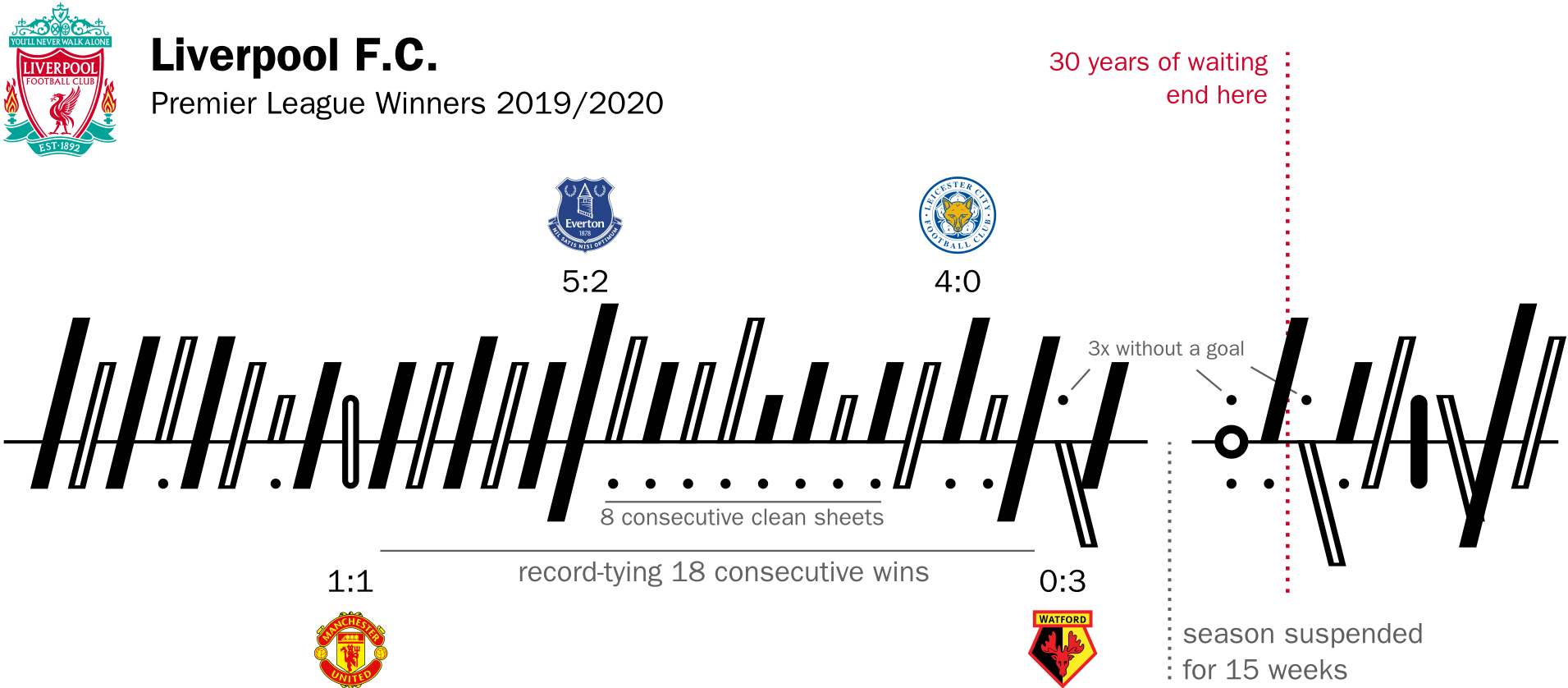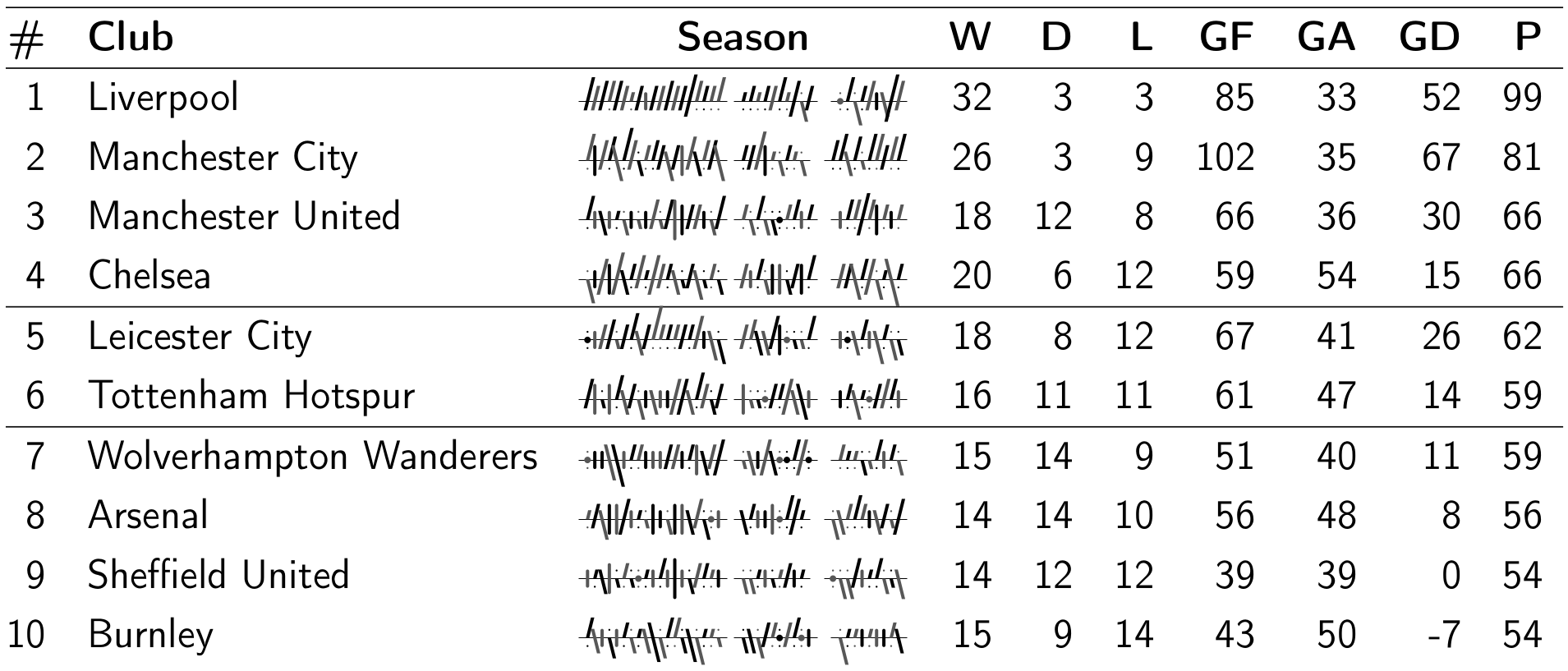soccerbars
Word-sized tallies for series of association football match results
What for?
Since the first season of the Football League 1888/1889, results and standings are reported extensively and in great detail. Tables generally contain the information that is also the basis for determining ranks: matches played, accumulated goals for and against, goal differences, and points. Reports often make reference to recent form by pointing out that, say, a team has not lost at home in 17 matches.
The idea of soccerbars is to augment tables and reports by integrating the actual results, in sequence, as data words.
Similar micro-visualizations have been proposed before (see links below), but soccerbars represent a unique compromise between level of detail, simplicity, and visual effectiveness.
How to read
Series of results are represented with one tally per match.
- Tallies are tilted: forward leaning for wins, backward leaning for losses, straight for draws.
- Goals for and against are represented by the height at which tallies are clipped.
- Away matches are marked either by outlining (for large fonts) or changing color (small fonts).
More examples, use cases, details on design choices, and options are provided in the LaTeX package external page documentation (pdf).
How to use
Free software for the creation of soccerbars is available on github:
References and Links
- Ulrik Brandes (2021). The soccerbars package for LaTeX. [external page pdf]
- Ulrik Brandes, Bobo Nick, Brigitte Rockstroh & Astrid Steffen (2013). external page Gestaltlines. Computer Graphics Forum 32(3):171-180.
- Edward R. Tufte (2006). external page Beautiful Evidence. Graphics Press. [Chapter on sparklines]
- Alexander Kowarik, Bernhard Meindl & Matthias Templ (2015). external page sparkTable: Generating Graphical Tables for Websites and Documents with R. The R Journal 7(1):24-37.
- Nicolas Bissantz (2007). external page The ups and downs of soccer - illustrated by sparklines. [Website]
- Jonathan Ferry (2013). external page Making the Beautiful Table. [Website]
- The Guardian (2021). external page Football tables. [form charts]
Credits
Soccerbars have been designed and implemented by Ulrik Brandes. They are based on previous research with Bobo Nick (while at the University of Konstanz), discussions with David Schoch (The University of Manchester), and prototyping with Lukas Knoflach (TU Graz). Eren Akbiyik (ETH Zurich) has ported soccerbars for use with Python and R.

